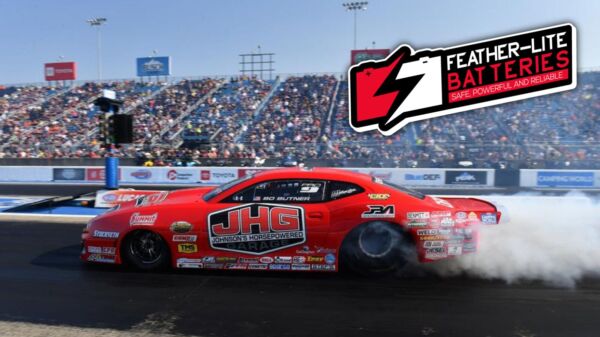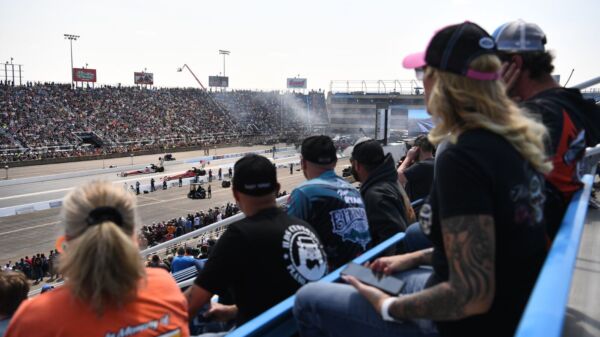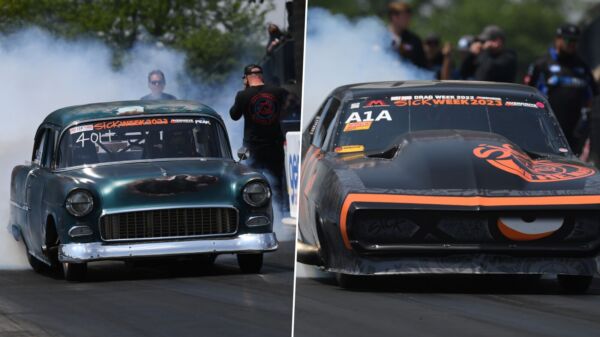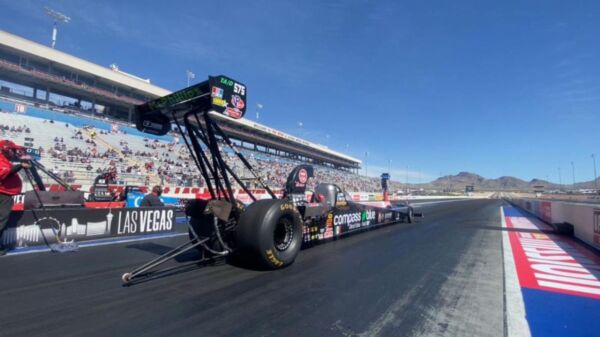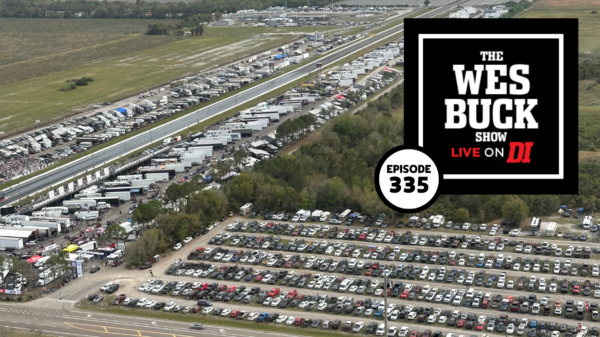Let’s get one thing clear right off the bat. They’re not really twins. Though if Cale, 25, and Cody Crispe, who turned 24 late in August, really set their minds to it they probably could fool their own mother. They look and act that much alike.
[Editor’s Note: This story originally appeared in DI #92 in October of 2014.]
“Me and my little brother, I almost get emotional about it but I can honestly say we have a relationship that’s pretty special that most people who have a sibling probably wish they had. It’s been really cool to grow up with him. Our heads are the same size. Our shoes are the same size. Our clothes are the same size. Head to toe, we share everything,” Cale confirms.
“We’re not twins but we’re almost exactly alike,” Cody agrees. “We’ve both been taught how to do things and our procedures on things are exactly the same. Our mindsets are in synch where we’re not arguing about what we should do here, what we should do there. We’re pretty much always sharing the same thoughts about what we need to do first, that type of stuff.”
The biggest thing they share these days is the tremendous responsibility and heavy workload of track preparation for the Professional Drag Racers Association (PDRA). Typically arriving a couple of days before testing starts on Thursday for each PDRA national event, the “Traction Twins,” as they’ve come to be known, will put in several 16- to 20-hour days before packing up and heading back home to their Denver base long after the last pair of cars thunder down the track.
They arrive at the venue a couple of days before Thursday’s pre-race test session on each race weekend. It all starts with scraping the track down to its bare state, which can be a relatively easy, though time-consuming, task—or not. It depends on how much rubber has been built up prior to the Twins arrival, the last time the track was scraped, the equipment routinely available to local track workers and whatever idiosyncrasies of adhesion a particular facility displays.
 They then set about rebuilding a good rubber base; spraying it down with liberal traction compound and making sure the lanes are as equal as possible when it comes to competition. And of course there’s always the possibility of rain, the bane of drag racing everywhere, that wreaks havoc on the racing surface and inevitably adds many hours of track prep efforts to the workday.
They then set about rebuilding a good rubber base; spraying it down with liberal traction compound and making sure the lanes are as equal as possible when it comes to competition. And of course there’s always the possibility of rain, the bane of drag racing everywhere, that wreaks havoc on the racing surface and inevitably adds many hours of track prep efforts to the workday.
It would be easy to say it’s a thankless job, but really it’s not. It’s a rare day when some member of the PDRA doesn’t approach Cale, Cody or both to recognize and express sincere gratitude for what they do. In fact, these “kids” with their flat-brimmed hats, dark sunglasses and trendy facial hair are often spoken of in almost reverential tones by aging and affluent PDRA racers and their family members. It’s the kind of respect you usually see reserved for doctors who help cure near-fatal conditions or firemen who risk everything to save a loved one. It comes because the Crispe brothers provide not only an eighth mile that will hold a 3.5-second pass at 220 miles per hour; they provide the faith required even to attempt one.
“We know there are some people that just feel secure, just feel comfortable when we’re there, and that’s probably the biggest compliment we could ever get,” Cale says. “They know that Cody and I wouldn’t send somebody down the race track unless we’re a hundred-percent confident it’s ready. We even have Junior (Dragster) parents come up sometimes and say stuff that just kind of tickles you because they just feel good having us there.
“Given the weather and given the conditions and whatever else may happen, we can only do so much at the track but we always try to do our best, keeping it safe and keeping it consistent; we just try to keep an eye on everything. When we tell somebody to put a window net up in a car it’s not because we’re trying to be an asshole. It’s because we care about them and we don’t want anything bad to happen to them.”
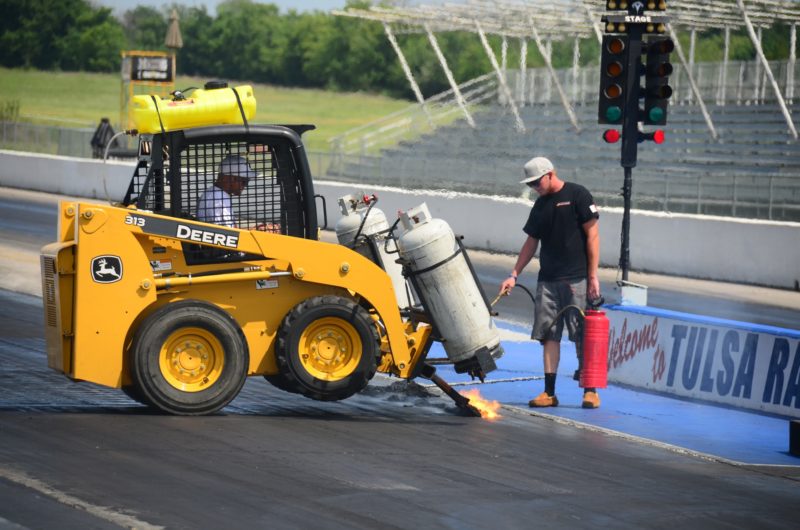
“If we do anything, we do it together. And if we do something and one of us isn’t there, then it doesn’t feel quite right, you know what I mean? It just doesn’t feel right,” Cale says. “Growing up, even when we were little, little, little kids, we’ve always done everything together, played baseball, rode bikes, anything you could think—got in trouble together at the race track a whole bunch of times.”
The race track is Bandimere Speedway in Morrison, Colorado, 5,800 feet above sea level on the west side of Denver, not far from where the Rocky Mountains begin. Built in 1958 by the Crispe boys’ great grandfather, John Bandimere Sr., Safety Proving Grounds of America was constructed not only to get kids off the streets and racing in a safe haven, but to promote and support Bandimere’s then-expanding performance auto parts business.
Ten years later the facility gained its current name along with NHRA sanctioning and in 1978 the first NHRA Mile-High Nationals introduced professional, national-event drag racing to the Denver area. By this time John Bandimere Jr. was running the track and had an eager, young employee quickly growing into the role of his right-hand man.
“Our dad was 13 or 14 years old and lived and worked across the street from where the race track is and his uncle went over and said, ‘Hey, you got anything for this kid to do because he’s just driving me nuts. He’s ready to do just about anything.’ So my grandfather had him start picking up trash and everything kind of went from there,” Cale explains.
Larry Crispe turned out to be not only an exceptional employee; he fell in love with the boss’ daughter and became a son-in-law, too. Larry married Johnna Bandimere early in 1985 and Cale, the couple’s first born, arrived four years later, followed by his one and only sibling 19 months after that.
By the time they were eight or nine years old, Cale and Cody were out at the race track every day, too, following in their father’s footsteps.
“All through middle school and high school, everybody used to kind of look at us as spoiled because we got to hang out at a race track, but me and my brother, we had to go to work straight after we went to school. Every day at two o’clock we’d get out of school, go straight to the track, work, go home and take care of our homework,” Cody recalls. “Pretty much as soon as we could reach the pedals on a golf cart and start driving around Dad and Grandpa had us start at the lowest point possible, picking up trash, pumping out oil tanks, weeding, mowing, all that kind of stuff.”
It wasn’t all work and no play, though, as Cale found time to play football and golf and be on his school’s wrestling team, while Cody actually showed considerable promise as a young baseball player.
“Yeah, I played quite a lot of baseball all the way from when I was probably eight, nine years old, all the way up until right before high school,” he says. “And I don’t know if I kind of got a little gun shy about doing the whole high school deal, but it takes a lot of commitment and a lot of time as far as balancing school and a job at the same time.
“I kind of took the avenue of just doing the job, but looking back on it now I do wish I would’ve played a little bit more baseball,” he admits. “But it’s just one those things; you’ve got to set your priorities where they are and then live with them.”
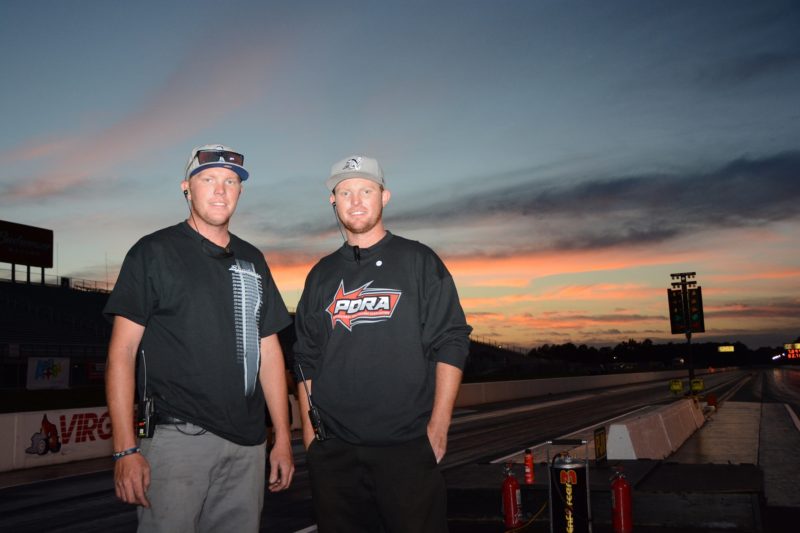 Despite working and practically living at the race track, neither Cale nor Cody got heavily into drag racing themselves. That’s not to say they didn’t try it out, though. They even enjoyed a certain amount of success. In 2007, Cale won a high-school challenge event at Topeka driving a ’64 Nova wagon; while a couple of years later Cody took the same car to the same event and reached the semi finals. Additionally, both drove Jr. Dragsters at Bandimere, where Cody won a pair of track championships.
Despite working and practically living at the race track, neither Cale nor Cody got heavily into drag racing themselves. That’s not to say they didn’t try it out, though. They even enjoyed a certain amount of success. In 2007, Cale won a high-school challenge event at Topeka driving a ’64 Nova wagon; while a couple of years later Cody took the same car to the same event and reached the semi finals. Additionally, both drove Jr. Dragsters at Bandimere, where Cody won a pair of track championships.
“Growing up at the race track, we just quit racing after the high school thing because it’s just hard to differentiate whether you’re an employee of the race track or a racer. It’s hard to do both at the same time,” Cale says. “But we still love cars and race cars; we just don’t drive them.”
Both brothers park classic American muscle in their garages, though, with Cale driving a snow-white ’69 Camaro, while Cody tools around in a silver ’73 Nova.
“Cale doesn’t get his out too much, but I drive mine quite a lot,” Cody says. “I drove it pretty much all summer when it was nice out. It goes pretty good, but still gets about 20 miles to the gallon after we put the powertrain from a 2000 Camaro in it, just a daily driver.”
Along for the ride with Cody has been his high-school sweetheart, Courtnee, and the two are getting married early this November. Cale already tied the knot a couple of years back—then untied it not long after.
“She didn’t really like this lifestyle so she kind of hit the road. It’s definitely not for everyone, I know that, and I probably should’ve listened to my parents who pretty much knew what was going to happen,” he admits.
“But I’ve been dating (PDRA Pro Nitrous driver) Lizzy (Musi) for a few months now and I’m just so much happier, a lot more relaxed,” Cale continues. “Coming from a racing family and doing her own thing like she is, she just understands everything we do a lot better. We’ve seen each other quite a bit over the summer, but with her living in North Carolina and me in Colorado it’s still a challenge, but she’ll be going to Cody’s wedding with me and then to the PRI show in December so we’re pretty happy with how things are going right now.”
Obviously knowing what his brother has gone through, Cody recognizes all too well the potential pitfalls of being away so often and so long and what it could do to a fledgling marriage.
“I think that kind of runs through anybody’s mind when they have a significant other that they’ve been with for that much of their life. But I really couldn’t ask for anybody that’s more supportive than Courtnee toward what I do and how many weekends out of the year we’re gone,” he says.
“Absolutely I think that means that she cares about me and cares about what’s going on, but at the same time when I’m at home she does want to know there’s time for her and that type of stuff. I think in the near future it might have to be more she comes with me, but she also has a good job at home so that keeps her busy, too. I’m confident that we’ll be able to work it all out.”
But it’s not only personal relationships that feel the strain when the Twins hit the road. There will be 10 PDRA events in 2015, in addition to lengthy stints in the spring when they visit Qatar to apply their track-tuning expertise to the annual Arabian Drag Racing League season. Meanwhile, they remain a major part of the Bandimere Speedway crew, too.
“I think a lot of people think we’re pretty much on vacation between races, but really, going to the races is taking us away from our regular jobs at the race track. We go straight to work when we get home,” Cale says.
“I think about the most (away from home events) we could possibly do as far as keeping the race track going and not get totally burned out on the whole deal is what we’re doing now,” Cody adds. “For some of our big events of the season it takes all three of us; me, my brother and my dad, plus whatever help we have at the race track to get things done. When we’re not there, he’s got to put all that weight back on his shoulders and depend on other people that maybe don’t know as much about it like the back of our hands like me and Cale do.
“And he’s getting older so it’s not so easy for him to put 16-hour days in, one after the other after the other. I don’t want to say he’s getting old, but he is getting older and we kind of feel worse leaving every time because he gets tired, you know?”
Both brothers emphasize the role their dad continues to play in their lives, not only as a father, but as a mentor, a boss and a teacher.
“The one thing I could say is that for all the attention we might be getting right now, all the credit that goes to us should be pointed directly towards our dad,” Cale insists. “Because without him, hands down, there’s no way in hell Cody and I would ever be here, let alone be who we are. I guess we just truly thank him for all he’s done and who he is as a person and what he’s done for the sport. He’s a pretty incredible guy.”
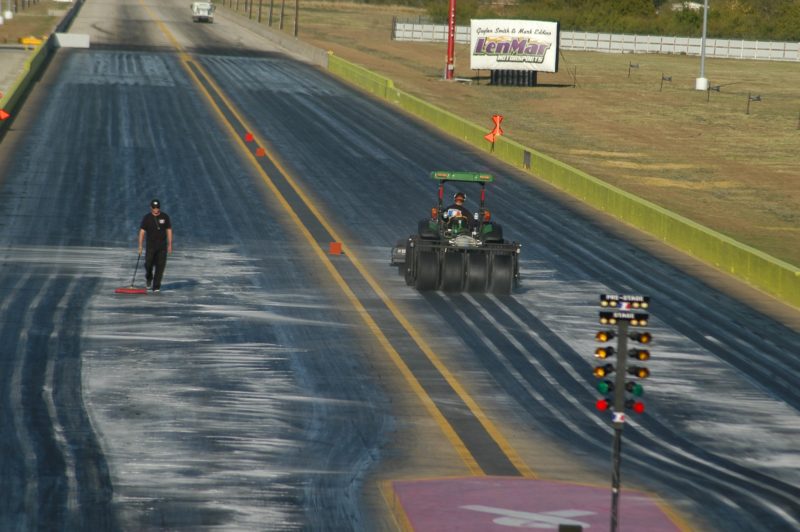
It was mid-2010 when 21-year-old Cale accompanied his father to work the ADRL race at Gateway Motorsports Park near St. Louis. They were there at the request of Chad Head, then working part-time for the precursor series to the PDRA. As they didn’t run at his family’s track in Denver, Cale says he’d seen only one Pro Mod race before, a couple of years earlier in Las Vegas.
“I did enjoy it, but it was hard to be there without my brother because I knew how much he was going to like it,” he recalls. “My dad and I, we had never even seen eighth-mile Pro Mod racing like that run anywhere, let alone prep a race track for them. But all of a sudden we’re there so we just do our normal gig and they’re beside themselves about how good the track was. And it just kind of took off from there, I guess.”
That St. Louis event also introduced to the ADRL—and to the greater drag racing community—a Larry Crispe-designed tire-dragging machine that employs four slicks counter-rotating to the direction of travel in order to more effectively lay rubber down on the racing surface. Cale says it was the brainchild of his dad, with help on construction from rearend builder Mark Williams.
 “That was the original machine we built 14 years ago. Part of the reason we even got to go do what we did with ADRL is because the track at Albuquerque let us borrow their tractor and machine that weekend because we didn’t have enough equipment or didn’t have the funds to build another one for our first race,” Cale reveals.
“That was the original machine we built 14 years ago. Part of the reason we even got to go do what we did with ADRL is because the track at Albuquerque let us borrow their tractor and machine that weekend because we didn’t have enough equipment or didn’t have the funds to build another one for our first race,” Cale reveals.
“So Albuquerque let us have back our old one just for the weekend and me and my dad loaded up our own personal stuff from Bandimere Speedway and took it all to St. Louis. That tractor is still working and operating in Albuquerque today,” he adds proudly.
Since that weekend, the Crispes have built and sold about 15 of the slick tire-dragging machines, including a couple to NHRA, which quickly adopted them for national-event use after the ADRL experiment proved so successful.
“Our first one was actually sold to Qatar; KH (Sheikh Khalid Al Thani) bought it. We really didn’t ever intend or mean to sell these or make a market for them, and still don’t,” Cale says. “We don’t do any selling at all because it’s hard enough for us to try to run a race track let alone build all this stuff. It’s just me and my brother and my dad that builds all this equipment.”
It doesn’t stop there. Larry Crispe has been instrumental in developing several other track-prep-related machines at Bandimere Speedway that literally have had sport-changing influence. The little roller arm that attaches to the front of a quad to press up against a big rear slick and push a car off a shutdown lane? That’s one of his ideas. So is the flamethrower-equipped Bobcat tractor with a built-in track scraper to help speed up that tedious job. Then there’s the traction compound spraying rig that’s abandoned traditional CO2 canisters for a small, rig-mounted, gasoline-burning air compressor to create even spray pressure that never runs out.
“Like I said, we will build these things if someone wants to buy one,” Cale says, “but we don’t worry too much about copycats if a track wants to build one for themselves. We can’t knock a little eighth-mile race track or somebody that just wants to improve their race track themselves because that’s why we made these things in the first place for our track.”

That openness extends to what the Traction Twins have learned over the years at their own track and through expanding their experience nationally and even worldwide. Cale insists he and his brother remain willing to answer any and all queries about what they’re doing.
“We don’t think it would be right for us to hold any secrets. There may be things people don’t ask that we won’t necessarily tell them, but there’s not going to be anything that if they ask us that we won’t answer,” he claims. “That’s just something we care about. These are some pretty extreme cars we work with, they’re pretty wild, and for us to just shy away and not tell something about what we do or how we do it to keep them safe, then that would just be a selfish way to be, just being greedy or whatever.
“So it doesn’t bother us. We tell anybody anything we can, but you have to remember the tracks aren’t always going to be the same and we tell them that. But anybody that ever wants to come and watch us do anything, we always let them be right there, do whatever. Kind of the opposite of what you would say of somebody in racing, I guess.”
According to Cody, gaining that experience, getting to travel and work at different track facilities is what helps keep the Twins interested and engaged. He says they enjoy the challenge of seeing what different types of concrete behave like, how each track is affected by local weather, how difficult it may be to scrape, how many tires they go through in laying down the rubber, what kind of traction powder to use.
“There are always going to be different avenues of how you can get something done. Not only that, but we like the ingenuity behind it as far as machines like the tire rotator and sprayer go,” Cody says. “We’ve been fortunate enough at the race track to have fun, but then we can actually build stuff that we think might work better. Who knows if some of the stuff might not have worked if we wouldn’t have put so much time and labor into figuring out what would be the best option?
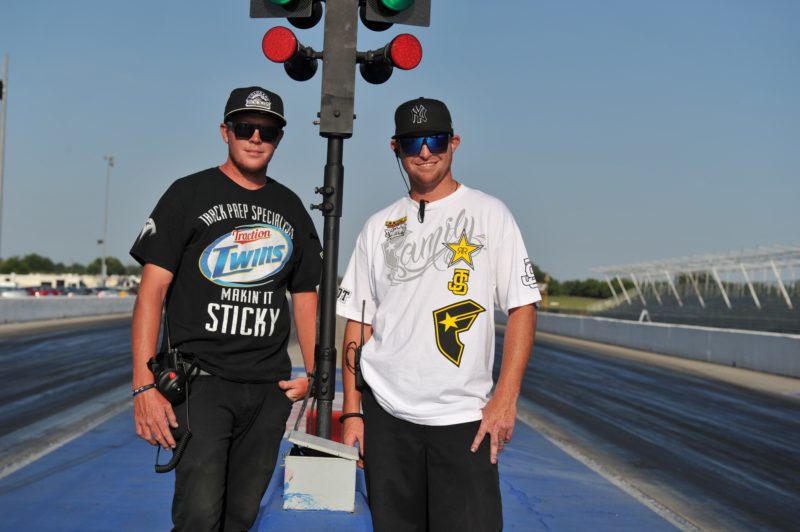 “We just think it’s cool to be inventive like that to where we can give our ideas to NHRA and PDRA when we find stuff that works better, that’s more efficient. I think that’s kind of what keeps us going the most; it’s just like one-step forward thinking in everything we do.”
“We just think it’s cool to be inventive like that to where we can give our ideas to NHRA and PDRA when we find stuff that works better, that’s more efficient. I think that’s kind of what keeps us going the most; it’s just like one-step forward thinking in everything we do.”
Following that initial experiment at Gateway in 2010, Cale and brother Cody worked every ADRL event there was before seamlessly switching over to the PDRA when it took over this year as the country’s preeminent eighth-mile doorslammer organization. Meanwhile, the “Traction Twins” emerged as the best-known track-prep specialists in the country, with their reputation rivaled only by the anonymous, national-event track crews of the NHRA.
“We got the name our first time over in Qatar, the winter early in 2011 I think, when we were rooming with David Cook and ‘Boo,’ David Koch,” Cale remembers. “A lot of the Middle Eastern people, they had a hard time telling Cody and I apart. Twins, they always called us the twins, the twins. And then I’m pretty sure it was Cookie, he started saying Traction Twins and it kind of just stuck from there.
“Everybody started calling us the Traction Twins and even now when people don’t know our names exactly they say, ‘Hey, Twin,’ and we both kind of look over. And even though I’m Cale, you call me Cody and I’ll still probably turn around even if I know he’s not there, and he’ll do the same thing just because it happens so much. We really are a lot alike.”
Photographs by Joe McHugh and Ian Tocher
This story was originally published on March 17, 2020. 


